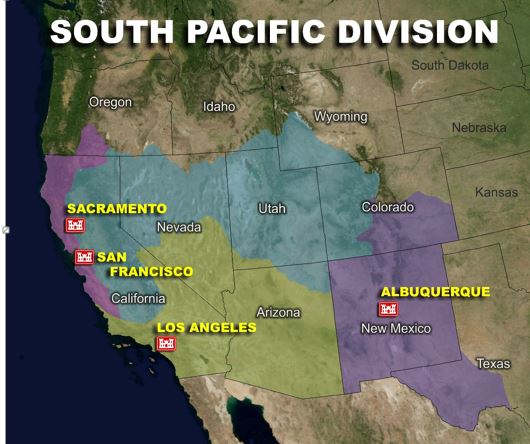The U.S. Army Corps of Engineers’ Continuing Authorities Program (CAP) is a group of nine water resource related authorities contained in several different laws. The purpose of the CAP is to plan, design, and construct water resources projects of limited scope and complexity. Unlike General Investigation (GI) studies, CAP projects do not require project-specific authorization from Congress. The nine CAP authorities are listed in the table below.
All projects in this program include a feasibility phase and an implementation phase. Planning activities, such as development of alternative plans to achieve the project goals, initial design and cost estimating, environmental analyses and real estate evaluations are performed during the feasibility phase to develop enough information to decide whether to implement the project. The feasibility phase is initially federally funded up to $100,000. Any remaining feasibility phase costs are shared 50/50 with the non-federal sponsor after executing a feasibility cost sharing agreement (FCSA). The final design, preparation of contract plans and specifications, permitting, real estate acquisition, project contracting and construction, and any other activities required to construct or implement the approved project are completed during the implementation phase. The Corps and the non-federal sponsor sign a project partnership agreement (PPA) near the beginning of the implementation phase. Costs beyond the feasibility phase are shared as specified in the authorizing legislation for that section.
All CAP projects require a non-federal sponsor – typically a local agency such as a city or county. For some types of projects, non-profits may be the non-federal sponsor. The non-federal sponsor shares in the cost of both the feasibility study (except for Section 204 feasibility studies which are 100% federally funded, and of project implementation. Cost sharing for Section 111 replicates the legacy cost sharing for the navigation project linked to the impacts being addressed by the Section 111 study/project itself, for both feasibility and project implementation. There are limits to the allowable federal cost-share for each CAP project. The federal limit per project is $10 million for all authorities except for Section 14,208 and 111, which have respective limits of $10 million, $500,000 and $12.5 million. For projects with a federal limit of $10 million, the maximum total cost of the project is usually about $15 million. Projects that cannot be completed within the applicable CAP cost limit are not eligible for federal funding under this program. Those projects may, however, be eligible for federal funding through other USACE programs.
Regional CAP Production Center
The Regional CAP Production Center (RCPC) was established in 2015 as a new organization within the South Pacific Division (SPD) of the U.S. Army Corps of Engineers. The RCPC focuses exclusively on completing CAP projects within the geographic area of the SPD (see map below). The mission of the RCPC is to support each of the four SPD districts by efficiently and effectively completing CAP feasibility studies in order to address problems identified by our local communities in the region. The South Pacific Division includes four USACE districts: Albuquerque, Los Angeles, Sacramento, and San Francisco. The team at the RCPC has broad expertise in planning, engineering, environmental resources and economics, and has the ability to utilize experts in other disciplines as needed.
If you have questions, or would like more information on the Continuing Authorities Program, please contact the Regional CAP Production Center at 415-503-6822, or juliette.hayes@usace.army.mil.
|
AUTHORITY
|
PROJECT PURPOSE
|
MORE INFORMATION
|
|
Section 14, Flood Control Act of 1946, as amended
|
Streambank and shoreline erosion protection of public works and non-profit public services
|
Fact Sheet and Template Letter of Request
|
|
Section 103, River and Harbor Act of 1962, as amended (amends Public Law 79-727)
|
Beach erosion and hurricane and storm damage reduction
|
Fact Sheet and Template Letter of Request
|
|
Section 107, River and Harbor Act of 1960, as amended
|
Navigation improvements
|
Fact Sheet and Template Letter of Request
|
|
Section 111, River and Harbor Act of 1968, as amended
|
Shore damage prevention or mitigation caused by Federal navigation projects
|
Fact Sheet and Template Letter of Request
|
|
Section 204, Water Resources Development Act of 1992, as amended
|
Beneficial uses of dredged material
|
Fact Sheet and Template Letter of Request
|
|
Section 205, Flood Control Act of 1948, as amended
|
Flood damage reduction
|
Fact Sheet and Template Letter of Request
|
|
Section 206, Water Resources Development Act of 1996, as amended
|
Aquatic ecosystem restoration
|
Fact Sheet and Template Letter of Request
|
|
Section 208, Flood Control Act of 1954, as amended (amends Section 2, Flood Control Act of August 28, 1937)
|
Removal of obstructions, clearing channels for flood control
|
|
|
Section 1135, Water Resources Development Act of 1986, as amended
|
Project modifications for improvement of the environment
|
Fact Sheet and Template Letter of Request
|
